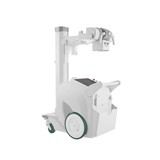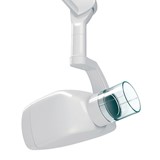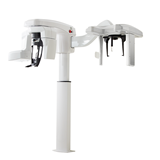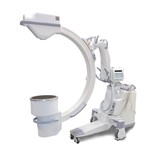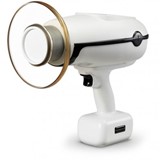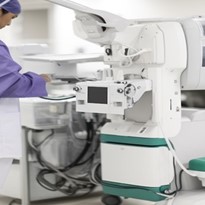Mobile X-ray machines play a pivotal role in modern healthcare, enabling medical professionals to obtain critical diagnostic images with convenience and speed. However, to ensure the continued reliability, accuracy, and safety of these essential medical tools, it is imperative to establish a comprehensive maintenance and care regimen. In this guide, we will delve into the crucial aspects of maintaining and caring for mobile X-ray machines, following a professional, objective, and informative approach.
I. Establishing a Regular Maintenance Schedule
A. Importance of Routine Maintenance
- Routine maintenance is the cornerstone of preserving the functionality and longevity of mobile X-ray machines.
- It ensures that the equipment consistently delivers high-quality diagnostic images, which is vital for accurate diagnoses and patient care.
- Maintenance also plays a critical role in minimizing downtime, preventing costly repairs, and enhancing the overall safety of the machine for both patients and healthcare providers.
B. Frequency of Maintenance Checks
- The frequency of maintenance checks should align with the workload and usage patterns of the mobile X-ray machine.
- Generally, routine checks and maintenance should be performed at regular intervals to catch issues before they become critical.
- High-use machines may require more frequent inspections, while those with lighter use may have longer intervals between maintenance.
C. Creating a Maintenance Calendar
- Establishing a clear and structured maintenance calendar is essential to ensure that maintenance tasks are not overlooked.
- A maintenance calendar should include specific dates for inspections, cleaning procedures, and calibration.
- By adhering to a well-organized schedule, healthcare facilities can proactively manage their mobile X-ray equipment, reducing the risk of unexpected failures and maintaining a high standard of patient care.
II. Cleaning and Sanitization Protocols for Infection Control
A. Cleaning Procedures
- Surface Cleaning
- When cleaning the surfaces of mobile X-ray machines, it is crucial to follow precise procedures to maintain a sterile and safe environment.
- Begin by turning off the machine to ensure safety during cleaning.
- Use a mild, non-abrasive disinfectant that is compatible with the materials of the machine. Consult the manufacturer's recommendations for approved cleaning agents.
- Dampen a lint-free, non-abrasive cloth or wipe with the chosen disinfectant. Avoid excessive moisture, which can damage the equipment.
- Gently wipe down all external surfaces of the machine, including the control panel, handles, and any exposed wires.
- Pay close attention to areas that frequently come into contact with hands or gloves, as these are more likely to harbor germs.
- Ensure that no cleaning solution enters any openings or vents on the machine.
- Allow the surfaces to air dry completely before powering the machine back on.
- Regular surface cleaning not only promotes infection control but also maintains the longevity of the mobile X-ray machine.
- Radiographic Accessories
- Radiographic accessories, such as cassettes and grids, play a vital role in image quality and must be cleaned and disinfected regularly.
- Before cleaning, carefully remove any residual imaging materials, such as films or detector plates, from the accessories.
- Wipe the accessories with a disinfectant solution, following the manufacturer's recommendations for compatibility.
- Pay special attention to the surfaces that come into direct contact with patients or body fluids, ensuring thorough disinfection.
- Allow the accessories to air dry completely before storing or using them again.
- Regular maintenance of radiographic accessories ensures not only hygiene but also the quality and accuracy of diagnostic images.
B. Infection Control Measures
- Hand Hygiene
- Maintaining proper hand hygiene is an essential infection control measure for those handling mobile X-ray machines.
- All personnel involved in the operation and maintenance of the machine should thoroughly wash their hands with soap and water for at least 20 seconds before and after each use.
- In healthcare settings, the use of alcohol-based hand sanitizers with at least 60% alcohol content can be an effective alternative when soap and water are not readily available.
- Emphasize the importance of hand hygiene to reduce the risk of contamination and cross-infection.
- Personal Protective Equipment (PPE)
- To prevent cross-contamination and protect both patients and operators, the use of appropriate personal protective equipment (PPE) is paramount.
- Operators should wear disposable gloves when handling the machine, patients, or any potentially contaminated surfaces.
- Depending on the situation and the likelihood of exposure to bodily fluids, additional PPE, such as gowns and masks, may be necessary.
- Properly disposing of used PPE and replacing it as needed is essential to maintain a sterile environment.
- Environmental Hygiene
- Maintaining environmental hygiene in the vicinity of the mobile X-ray machine is essential for overall infection control.
- Regularly clean and disinfect the surrounding surfaces, such as floors, counters, and any equipment or furniture in the immediate area.
- Pay attention to high-touch surfaces like doorknobs and light switches.
- Adequate ventilation in the room helps minimize the spread of airborne contaminants.
- Encourage a culture of cleanliness and awareness among healthcare staff to collectively contribute to a safe and sanitized environment.
III. Ensuring Smooth Functionality of Components
A. Component Inspection
- X-Ray Tube
- Inspecting the X-ray tube for wear and tear is crucial to maintain optimal performance and patient safety. Here's how to do it:
- Carefully examine the external casing for cracks, dents, or signs of damage.
- Inspect the tube's focal spot for any irregularities or deterioration.
- Check for unusual noises during operation, as these can indicate internal issues.
- Verify that the cooling system is functioning correctly, as overheating can damage the tube.
- Cabling and Wiring
- Regularly checking the cables and wiring ensures the integrity of your mobile X-ray machine. Follow these steps:
- Examine all cables and wiring for fraying, kinks, or exposed wires.
- Pay particular attention to connectors and plugs, ensuring they are secure and undamaged.
- Perform a visual inspection of the cable insulation to identify any signs of wear or damage.
- Test the functionality of cable connections by gently wiggling them to detect loose connections.
B. Calibration and Quality Control
Calibrating your mobile X-ray machine is essential for accurate and reliable imaging. Here's an overview of the calibration process:
- Calibration involves adjusting the machine's settings to ensure that it produces accurate and consistent results.
- Use a calibrated phantom or test object to assess the machine's accuracy in producing images.
- Regularly monitor and record the results of calibration tests to track any deviations or trends.
- Consult the manufacturer's guidelines and recommendations for calibration frequencies and procedures.
C. Battery and Power Supply
Maintaining the power source is critical to avoid interruptions in mobile X-ray machine operation. Here's how to ensure the battery and power supply are in top condition:
- Regularly inspect the battery for signs of leakage, corrosion, or physical damage.
- Confirm that the battery contacts and connections are clean and free from debris.
- Check the power supply unit for any damage or exposed wires and repair or replace as necessary.
- Monitor the battery's charge status and ensure it is within the recommended range for optimal performance.
- Follow manufacturer guidelines for charging and discharging the battery to prolong its lifespan.
IV. Addressing Common Technical Issues and Troubleshooting
A. Common Problems
- Image Quality Issues
- Blurriness: Blurry images may result from motion during imaging or a dirty X-ray tube window. Ensure the machine is stable during imaging, and clean the tube window regularly.
- Artifacts: Artifacts can stem from foreign objects on the image receptor or interference from nearby electronic devices. Keep the image receptor clean and maintain a safe distance from electronic interference sources.
- Overexposure/Underexposure: Incorrect exposure settings or a malfunctioning X-ray tube can lead to overexposed or underexposed images. Double-check exposure settings and consider a tube inspection.
- System Errors
- Error Codes: Familiarize yourself with the system's error codes and their meanings, which can often be found in the user manual. When an error code appears, consult the manual for troubleshooting steps.
- Communication Errors: Problems in data transmission between components may lead to communication errors. Verify cable connections, and if issues persist, consult technical support.
- Power Failures: Power fluctuations or failures can disrupt the system. Ensure a stable power supply and consider a backup power source like an uninterruptible power supply (UPS).
B. Diagnostic Procedures
When faced with technical issues, a systematic approach to diagnosis and resolution is essential. Follow these steps:
- Initial Inspection:
- Examine the physical condition of the mobile X-ray machine, looking for visible damage, loose connections, or signs of wear.
- Check the power source, including cables and connections, to ensure a stable power supply.
- Review any error messages or codes displayed on the machine.
- Consult the User Manual: The user manual often contains a troubleshooting section with specific guidance on common issues and error codes. Refer to it for initial troubleshooting steps.
- Contact Technical Support: If the issue remains unresolved, contact the manufacturer's technical support or a certified service provider. Provide detailed information about the problem and any error codes displayed.
- Preventive Maintenance: Consider implementing a regular preventive maintenance schedule to reduce the occurrence of technical issues. This includes cleaning, calibration, and quality control checks.
- Training and Education: Ensure that operators and technical staff receive adequate training on the proper operation and maintenance of the mobile X-ray machine. Well-trained staff can often identify and resolve issues more effectively.
V. Extending the Lifespan of Mobile X-Ray Equipment
A. Proper Handling and Transport
When moving and transporting mobile X-ray machines, following best practices is crucial to ensure their longevity and functionality. Here are key considerations:
- Secure Transportation: Use specialized carts or transportation equipment designed for X-ray machines to minimize vibrations and shocks during movement.
- Avoid Rough Handling: Instruct personnel to handle the equipment with care, avoiding sudden movements or impacts that could damage delicate components.
- Stabilize the Machine: Ensure that the machine is properly secured within its transport vehicle or cart to prevent shifting during transit.
- Follow Manufacturer Guidelines: Adhere to the manufacturer's guidelines for safe transportation, including any recommendations for locking components in place.
B. Storage and Environmental Considerations
Proper storage and environmental conditions are essential to safeguard mobile X-ray equipment when it's not in use. Here are some recommendations:
- Climate Control: Store the machine in a controlled environment with stable temperature and humidity levels to prevent corrosion and electronic component damage.
- Protection from Dust and Debris: Cover the equipment when not in use to prevent dust, debris, and potential contaminants from accumulating on sensitive surfaces.
- Ventilation: Ensure adequate ventilation to prevent overheating when the machine is in storage. Avoid obstructing cooling vents or air circulation around the equipment.
- Security Measures: Implement security measures to protect against unauthorized access or tampering with the machine.
C. End-of-Life Management
Responsible disposal or retirement of old X-ray equipment is essential for environmental and safety reasons. Here's how to manage the end of the machine's lifecycle:
- Regulatory Compliance: Familiarize yourself with local and national regulations governing the disposal of medical equipment. Ensure compliance with disposal requirements.
- Equipment Assessment: Evaluate the machine's condition and functionality. Consider whether it can be refurbished, reused, or if it should be retired.
- Professional Disposal Services: Engage with qualified disposal services experienced in handling medical equipment. They can dismantle, dispose of, or recycle components in an environmentally friendly manner.
- Data Security: If applicable, ensure that any patient data stored within the machine is securely wiped or removed according to data privacy regulations.
- Documentation: Maintain records of the disposal process, including certificates of disposal and compliance with relevant regulations.
In conclusion, the maintenance and care of mobile X-ray machines are vital aspects of ensuring their continued functionality, reliability, and safety in healthcare settings. By establishing a regular maintenance schedule, including routine inspections, cleaning procedures, and calibration, healthcare facilities can proactively manage their equipment, minimize downtime, and maintain high image quality for accurate diagnoses. Infection control measures, such as proper cleaning, hand hygiene, and the use of personal protective equipment, are essential to create a safe and sterile environment for both patients and operators. Addressing common technical issues through systematic troubleshooting and timely technical support can prevent disruptions in the machine's operation. Lastly, extending the lifespan of mobile X-ray equipment involves proper handling during transportation, appropriate storage conditions, and responsible end-of-life management in compliance with regulatory requirements. Through diligent maintenance and care, healthcare facilities can maximize the longevity and effectiveness of their mobile X-ray machines, ultimately contributing to improved patient care and diagnostic accuracy.






